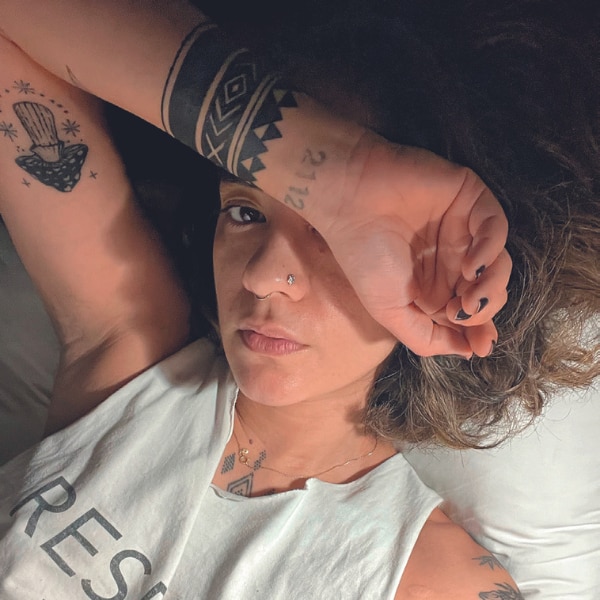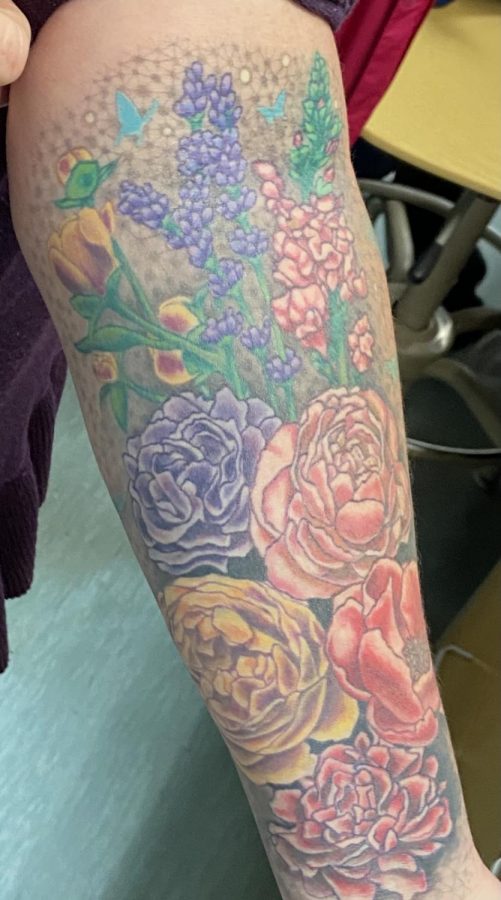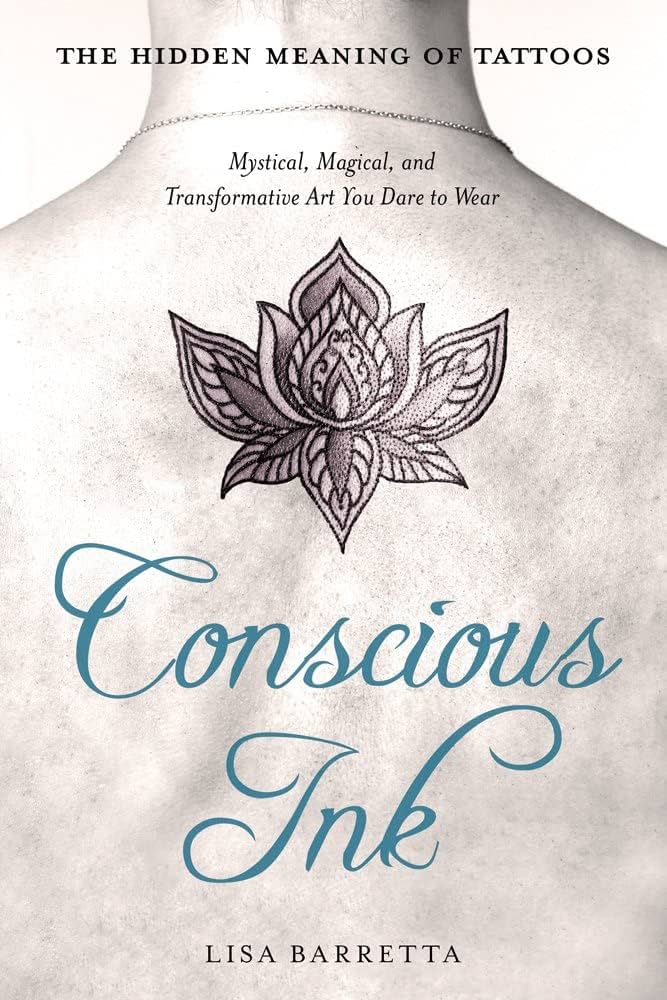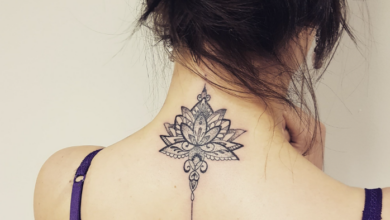
If you have ever wondered about the deeper meaning behind tattoos, “Beyond Ink: The Cultural Significance Of Tattoos” is here to unravel the fascinating world of body art. This insightful exploration takes you on a journey to understand how tattoos have transcended their aesthetic value and become powerful symbols of identity, culture, and personal expression. Get ready to discover the hidden stories and rich heritage behind these indelible marks that adorn the skin.
History of Tattoos
Origins of tattooing
Tattooing is a practice that dates back thousands of years and has been found in various cultures across the globe. The exact origins of tattooing are difficult to trace, as the earliest evidence of tattooed individuals is often obscured by the passage of time. However, archaeological discoveries have provided valuable insights into the ancient origins of tattooing.
In 1991, the discovery of the Ötzi the Iceman, a well-preserved mummy from around 3300 BC, revealed the existence of tattoos on the body. These tattoos were created using carbon-based ink and were likely created for therapeutic and medicinal purposes. This finding suggests that tattooing may have originated as a form of healing.
Cultural variations in ancient tattooing
As tattooing spread across different cultures, distinct styles and techniques emerged. In ancient Egypt, tattoos were often associated with religious beliefs and were found on both men and women. These tattoos depicted symbols of protection, fertility, and beauty.
In Maori culture, tattooing, known as “tā moko,” was a highly regarded art form. These intricate facial tattoos served as a way to signify one’s social status and lineage. Each individual’s unique moko told a story of their ancestry and accomplishments.
In Japan, the art of tattooing, or “irezumi,” had both a decorative and a societal function. Tattoos were used to mark criminals as a form of punishment, but they also became popular among the lower classes and eventually evolved into elaborate full-body designs. Today, traditional Japanese tattoos are admired for their intricate details and symbolism.
Religious and spiritual connotations
Throughout history, tattoos have held significant religious and spiritual connotations in many cultures. In Polynesia, tattoos were seen as sacred and were closely tied to the spiritual beliefs of the people. These tattoos were believed to offer protection, guidance, and connection to ancestral spirits.
In Hinduism, tattoos known as “yantras” play a significant role in spiritual practices. These complex geometric designs are believed to have a divine energy that can bring protection, prosperity, and spiritual enlightenment to the wearer.
In Christianity, tattoos have often been associated with pilgrimage and devotion. Some Christians choose to get tattoos as a way of expressing their faith and commemorating important religious symbols or verses.
Symbolism in traditional tattoos
Traditional tattoo designs are rich in symbolism and often carry deep cultural meanings. In many ancient cultures, tattoos served as badges of honor, marking a person’s achievements or societal roles.
For example, in Native American tribes, tattoos were used to represent acts of bravery or allegiance to a specific tribe. Each design had a unique meaning, showcasing the wearer’s accomplishments or connection to their heritage.
Similarly, in the maritime culture of sailors, tattoos held specific meanings. Nautical-themed tattoos, such as anchors or ship wheels, were worn by sailors to symbolize their profession and bring luck and protection during their voyages.
Evolution of Tattooing Practices
Modern techniques and equipment
The art of tattooing has come a long way since its ancient roots. Advancements in technology have revolutionized the tattoo industry, making the process safer, more efficient, and more precise.
Modern tattooing techniques rely on electric tattoo machines, which replaced traditional hand tools like bone or bamboo needles. These machines use several needles to rapidly puncture the skin and deposit ink into the dermis, resulting in more consistent and detailed tattoos.
The development of various needle configurations, such as liners and shaders, has allowed artists to create intricate lines and shading effects. Additionally, the introduction of disposable needles and sterile practices has greatly reduced the risk of infection.
Tattoo artists and their styles
Tattoo artists are skilled professionals who bring their own unique styles and artistic visions to the world of tattooing. Different artists specialize in various tattoo styles, such as traditional, realism, black and gray, or watercolor.
Traditional tattoos, also known as old-school tattoos, are heavily influenced by the bold, illustrative style popularized in the early 20th century. These tattoos often feature bold outlines, limited color palettes, and iconic designs like anchors, hearts, or roses.
Realism tattoos aim to replicate the appearance of lifelike portraits or objects on the skin. Artists who specialize in realism use techniques such as shading, highlighting, and meticulous detail work to create tattoos that closely resemble photographs.
Black and gray tattoos utilize a monochromatic palette, typically consisting of varying shades of black ink. This style is often chosen for its timeless and elegant look and is particularly suited for pieces with a strong emphasis on shading and depth.
Watercolor tattoos mimic the fluid and vibrant qualities of watercolor paintings. These tattoos often feature soft edges, blending colors, and artistic splashes, creating a unique and painterly effect on the skin.
Tattooing as an art form
Tattooing has emerged as a respected and celebrated art form in contemporary society. Many artists choose to view their work as more than just a decorative and permanent addition to the body; they see it as a means of self-expression and a way to create aesthetically pleasing compositions.
Tattoo artists carefully consider factors such as composition, color theory, and balance when designing tattoos. They aim to create harmonious and visually striking pieces that complement the body’s natural contours.
Beyond the technical aspects, tattooing provides artists with a deeply personal and intimate connection with their clients. The process often involves translating a client’s ideas, emotions, and stories into a visual representation, resulting in a collaborative and meaningful artistic experience.
Popular tattoo designs
The world of tattooing is incredibly diverse and ever-evolving, with a wide array of design options available. Popular tattoo designs often reflect cultural trends, personal interests, and individual aesthetics.
Floral tattoos, such as roses, lilies, or cherry blossoms, remain perennially popular due to their beauty and versatility. These designs can be adapted to suit various tattoo styles and are often chosen to symbolize growth, beauty, or love.
Animals are also a common choice, with designs featuring creatures like lions, birds, and wolves. These tattoos often hold symbolic meanings associated with the qualities and characteristics of the animal depicted.
Symbols and quotes from literature, mythology, or popular culture have gained popularity among tattoo enthusiasts, as they offer a way to express personal beliefs or pay homage to significant figures or stories.
Geometric and abstract tattoos, characterized by clean lines and geometric patterns, have also risen in popularity. These designs often rely on symmetry and repetition, creating visually striking and visually satisfying compositions.

Tattoos as a Cultural Identity
Tattoos as a form of self-expression
Tattoos have long served as a powerful form of self-expression, allowing individuals to communicate their identities, beliefs, and life experiences through art permanently etched on their skin.
In today’s society, tattoos are a tangible means of expressing individuality, personal values, and aesthetic preferences. Whether it’s a small symbol hidden on the wrist or an extensive full-body piece, tattoos serve as a visual representation of one’s uniqueness and personal narrative.
By choosing specific designs, colors, or placement, individuals can convey a wide range of emotions, messages, and personal affiliations. From celebrating cultural heritage to expressing political or social ideologies, tattoos speak volumes about the wearer’s identity and provide a platform for open dialogue and self-expression.
Tattoos as markers of group affiliation
Tattoos have historically served as markers of group affiliation and belonging, signifying one’s association with a particular community, subculture, or organization. Certain tattoos act as visual identifiers, instantly connecting individuals who share similar values or experiences.
For instance, biker gangs often adopt specific tattoo designs, such as eagle imagery or club logos, to signify their membership and loyalty to the group. These tattoos act as a form of nonverbal communication, instantly establishing a sense of trust and camaraderie among gang members.
Similarly, military personnel may get tattoos to commemorate their service or to showcase their belonging to a particular branch or unit. These tattoos can serve as a reminder of shared experiences, camaraderie, and the sacrifices made while serving the country.
Cultural and regional significance of tattoos
Tattoos have long held cultural and regional significance, acting as visual emblems of cultural heritage and traditions. From the intricate patterns of Polynesian tatau to the elaborate designs of Indian mehndi, these tattoos provide a tangible connection to a specific culture or region.
In Polynesian culture, for example, tattoos convey deep meanings rooted in ancestral traditions. The placement, design, and symbolism of each tattoo are carefully chosen to represent the wearer’s life journey, social status, and connection to their cultural roots.
Similarly, mehndi, or henna tattoos, are an integral part of many South Asian celebrations, particularly weddings. These intricate temporary tattoos, applied to the hands and feet, are considered symbols of beauty, good luck, and blessings during auspicious occasions.
Tattoos also serve as significant cultural markers for Indigenous communities around the world. Each tribe or group has its own unique tattooing practices and symbols, fostering a sense of pride, belonging, and cultural preservation.
Tattoos and social status
In some cultures, tattoos can hold social status and signify one’s rank or achievements within a community. In ancient times, certain tattoo designs were reserved for high-ranking individuals or those who had accomplished remarkable feats.
For example, in Japan, traditional full-body tattoos, known as “irezumi,” were traditionally associated with the yakuza, the country’s organized crime syndicates. These elaborate tattoos served as badges of honor and were used to convey authority, discipline, and fearlessness.
In certain African tribes, tattoos were used to denote one’s social standing or age group. Different tattoo designs or placements were reserved for specific stages in life, such as transitioning from adolescence to adulthood or entering a position of leadership.
While the social status associated with tattoos may vary across cultures and time periods, the enduring connection between tattoos and identity remains a powerful and significant aspect of tattoo culture.
Tattoos and Spiritual Beliefs
Religious and spiritual symbolism in tattoos
Throughout history, tattoos have held deep religious and spiritual significance for many individuals. In various cultural and religious practices, tattoos have been used as a means of expressing devotion, connecting with higher powers, or seeking protection.
For some Native American tribes, tattoos served as spiritual tokens, allowing individuals to honor their personal connection to nature, spirits, and the divine. These tattoos often depicted sacred symbols, animal totems, or natural elements believed to bring guidance, strength, and spiritual insight.
In Buddhism, tattoos known as “sak yant” hold important spiritual meaning. These intricately designed tattoos, created using traditional methods, are believed to provide protection, luck, and blessings. Each sak yant design has its own symbolism and is often chosen based on an individual’s specific needs or desires.
Tattoos as rituals and ceremonies
In many cultures, tattoos are an integral part of various rituals and ceremonies, marking significant life events or transitions. These tattoos serve as visual representations of one’s connection to the divine, ancestral heritage, or personal growth.
In Polynesian cultures, the process of tattooing, known as “tā moko” or “tatau,” is considered a sacred ritual. The act of receiving a tattoo is accompanied by prayers, songs, and rituals performed by tribal elders or spiritual leaders. The intricate designs are seen as a way to honor one’s ancestors and connect with the spiritual realm.
Similarly, in Thailand, the process of receiving a sak yant tattoo involves a sacred ceremony performed by a traditional Buddhist monk or ajarn. The tattoo is believed to be imbued with mystical powers through the chanting of sacred texts and the use of specific rituals.
Sacred and protective tattoos
In many cultures, tattoos are believed to offer protection from harm, evil spirits, or misfortune. These protective tattoos act as talismans, warding off negative energy and serving as a line of defense for the wearer.
In Nordic mythology, for example, certain symbols were tattooed on warriors as a form of protection and to invoke the favor of the gods in battle. These tattoos were believed to provide strength, courage, and divine assistance.
In Central and South America, indigenous tribes such as the Aztecs and Mayans used tattoos to protect themselves from harm and connect with their gods. Tattooed designs symbolized specific deities, represented animals associated with protective qualities, or depicted sacred rituals and myths.
Tattoos and cultural beliefs about the afterlife
In some cultures, tattoos are believed to have significance in the afterlife or serve as a means of guiding the soul to the next realm. These tattoos act as spiritual maps, ensuring a safe journey for the deceased and preserving cultural beliefs about the cycle of life and death.
In ancient Egypt, for instance, tattoos were thought to have protective properties in both life and death. Tattoos found on mummified individuals often showcased religious symbols, amulets, or spells to safeguard the deceased on their journey into the afterlife.
Similarly, in Polynesian cultures, tattoos were believed to serve as guides for the soul after death. These tattoos would help the deceased navigate the spiritual realms and reunite with their ancestors, ensuring a peaceful transition and the continuation of their spiritual journey.
Tattoos representing personal experiences and milestones
One of the most powerful aspects of tattoos is their ability to serve as personal narratives, acting as visual reminders of significant experiences, important milestones, or cherished memories. By immortalizing these moments on their skin, individuals can carry their stories and emotions with them wherever they go.
Tattoos can represent a wide range of personal experiences, from achievements and triumphs to moments of grief and loss. People often choose to commemorate life-changing events such as graduations, weddings, the birth of a child, or the loss of a loved one through tattoos.
For example, someone may choose to get a tattoo to symbolize their journey of overcoming addiction, serving as a constant reminder of their strength, resilience, and personal growth. Others may get tattoos to honor a loved one who has passed away, using symbols, dates, or even portraits to memorialize their presence and keep their memory alive.
Tattoos as reminders and lessons
Tattoos can also serve as reminders of important life lessons, values, or mantras that individuals want to carry with them throughout their lives. These tattoos act as visual affirmations, promoting personal growth, and serving as daily reminders of what is truly important.
For instance, someone may choose to get a tattoo of a word or phrase that represents resilience, reminding them to stay strong and persevere in the face of adversity. Others may opt for symbols that embody concepts such as love, compassion, or mindfulness as a constant reminder of their personal aspirations.
In this way, tattoos become not only outward expressions but also personal reminders and motivators, serving as anchors to one’s values and guiding principles.
Tattoos preserving cultural heritage
Tattoos play a crucial role in preserving cultural heritage, helping to pass down ancestral knowledge, traditions, and stories to future generations. By wearing these cultural symbols on their skin, individuals become living embodiments of their cultural inheritance, contributing to the rich tapestry of human history and diversity.
In traditional Samoan culture, for example, the art of tattooing, known as “tatau,” is deeply intertwined with the fabric of their society. Each tattoo design carries significant meaning, reflecting the wearer’s heritage, social status, and personal journey. By continuing to practice and embrace this ancient art form, Samoans ensure the preservation and transmission of their cultural heritage.
Indigenous communities around the world use tattoos as a means of cultural preservation and revitalization. These tattoos serve as a visual language, telling stories of creation, migration, and the struggles and triumphs of their ancestors. By reclaiming these tattooing traditions, these communities reaffirm their cultural identities and inspire the next generation to celebrate and honor their heritage.

Tattoos as Forms of Healing and Empowerment
Therapeutic and cathartic aspects of tattooing
For many individuals, the act of getting a tattoo can be a deeply therapeutic and cathartic experience. The process of undergoing a physical transformation through needle and ink can be incredibly empowering, allowing one to reclaim their body, heal emotional wounds, and embrace their own unique beauty.
Tattooing can provide a sense of control in a world filled with uncertainty. The act of choosing a design, collaborating with an artist, and ultimately undergoing the transformational process can be a form of self-empowerment and an assertion of one’s autonomy.
Additionally, tattoos can serve as a form of catharsis, allowing individuals to express and release emotions that may be difficult to put into words. The physical pain of the tattooing process can act as a channel for emotional release, providing a sense of relief and a fresh start.
Tattoos as a means of reclaiming one’s body
For some individuals who have experienced traumas, such as assault or illness, tattooing can become a powerful tool for reclaiming ownership and agency over their bodies. Tattooing offers a way to transform scars or marks left by traumatic experiences into something beautiful, meaningful, and entirely their own.
Survivors of breast cancer, for example, may choose to get tattoos on their chests as a way of reclaiming femininity, embracing self-love, and celebrating their bodies after undergoing mastectomies. These tattoos can act as a symbol of resilience, confidence, and a reminder of the individual’s journey through adversity.
In this way, the act of getting a tattoo can become a tool for physical and emotional healing, helping individuals move forward and embrace a renewed sense of self.
Tattoos for survivors of trauma and illness
Tattoos can also serve as important therapeutic tools for survivors of trauma or individuals who have experienced significant physical or mental health challenges. Through tattooing, they can create a visual representation of their strength, resilience, and ability to overcome adversity.
For survivors of sexual assault, tattoos can act as a symbol of empowerment, allowing them to reclaim their bodies and assert their agency. These tattoos often carry themes of resilience, courage, or messages of self-love and healing. By choosing to permanently mark their skin, survivors can carry a visible reminder of their strength and survival.
Similarly, individuals who have battled mental health issues may choose to get tattoos that symbolize their perseverance, recovery, or the support they have received along the way. These tattoos can serve as a source of strength and motivation during challenging times, acting as a reminder of the progress they have made and their ability to overcome obstacles.
Tattoos and body positivity
In recent years, tattoos have played an instrumental role in promoting body positivity and challenging societal beauty standards. Tattoos provide individuals with the opportunity to celebrate their bodies, regardless of shape, size, or perceived imperfections.
By choosing to adorn their bodies with meaningful and visually striking tattoos, individuals can reclaim their bodies as vessels of self-expression and self-love. Tattoos can act as a visual statement of acceptance, encouraging others to embrace their own unique beauty and celebrate their bodies.
Furthermore, tattoos can serve as a way to challenge the notion that one must conform to mainstream beauty standards to be considered beautiful or worthy. By showcasing diverse bodies and designs, tattoos foster a culture of inclusivity and celebrate the inherent beauty in every individual.
Tattoo Taboos and Stigma
Tattoos and social judgments
While tattoos have become increasingly accepted and mainstream, societal judgments and prejudices still persist. Some individuals hold negative stereotypes about tattooed individuals, associating them with criminality, rebellion, or unprofessionalism.
These judgmental attitudes can lead to social biases and discrimination, affecting how tattooed individuals are perceived in various aspects of life, including employment, education, and personal relationships. People with visible tattoos may face judgment and encounter obstacles in certain social settings.
However, it is important to challenge these preconceptions and recognize that tattoos do not define an individual’s character or capabilities. Artistic self-expression should be celebrated, and prejudice against tattooed individuals should be addressed and dismantled.
Cultural biases against tattoos
Cultural biases against tattoos can vary significantly across different societies and belief systems. While some cultures embrace tattooing as an integral part of their heritage and identity, others may have strict taboos surrounding the practice.
In some conservative cultures, tattoos may be associated with deviance, immodesty, or disobedience, leading to societal disapproval and ostracization. Certain religious teachings may also discourage or condemn tattooing, viewing it as a desecration of the body as a sacred vessel.
However, it is essential to recognize that societal attitudes towards tattoos are evolving, and what was once taboo may now be more widely accepted. The growing visibility and acceptance of tattoos have helped challenge these biases and encourage a more inclusive understanding of individual autonomy and self-expression.
Career implications and discrimination
Despite the increasing acceptance of tattoos in contemporary society, certain professional environments may still enforce strict policies against visible body art. Many industries, such as finance, law, or hospitality, often maintain conservative expectations regarding personal appearance and may view visible tattoos as unprofessional or inappropriate.
This can present challenges for tattooed individuals who aspire to work in these fields or advance in their careers. Job applicants may be required to cover their tattoos during interviews or may face pressure to conceal their tattoos in the workplace to conform to company standards.
However, it is crucial to advocate for inclusivity and challenge discriminatory practices based on personal appearance. Many organizations are becoming more progressive in their approach, recognizing the value of diverse perspectives and the importance of embracing individuality.
Challenging societal norms through tattoos
Tattoos have long been a means of challenging societal norms, expressing individual freedoms, and advocating for social change. From political statements to calls for equality, tattoos have served as visual symbols of defiance, rebellion, and the pursuit of social justice.
During times of social unrest, tattoos have been used to express solidarity and act as a visual rallying cry for marginalized communities. Tattooed revolutionaries have emerged throughout history, using their bodies as canvases to spread messages of resistance, hope, and change.
Tattoos can also serve as powerful tools for reclaiming agency over one’s body and challenging the beauty standards imposed by society. By embracing non-traditional beauty ideals and celebrating the unique qualities that make individuals who they are, tattooed individuals inspire others to challenge societal norms and embrace their authentic selves.

Tattoos in Popular Culture
Celebrities and their tattoo choices
Tattoos have become increasingly prevalent in popular culture, with many celebrities proudly showcasing their inked bodies. From actors and musicians to athletes and models, tattoos have become a ubiquitous part of the celebrity image.
Celebrities often use tattoos as a way to express their personal beliefs, mark important milestones, or pay homage to significant people in their lives. High-profile figures such as Angelina Jolie, David Beckham, and Rihanna have become known for their extensive tattoo collections, each piece contributing to their public personas.
These celebrity tattoo choices often fuel trends and inspire fans to seek out similar designs or styles. Tattoos worn by influential figures can have a powerful impact, influencing broader cultural perceptions of tattoos and shaping the evolving landscape of tattoo aesthetics.
Tattoos in music, film, and fashion
Tattoos have long been associated with music, film, and fashion, acting as integral elements of cultural movements and subcultures. Musicians, in particular, have embraced tattoos as a means of visually representing their artistic identities and connecting with their audiences.
From punk rockers to hip-hop artists, tattoos have served as visual signatures and symbols of rebellion, authenticity, and artistic self-expression. Music festivals and live performances often showcase a multitude of tattooed bodies, creating a striking fusion of sound and art.
Tattoos have also made a significant impact on the film industry, with iconic characters such as Lisbeth Salander in “The Girl with the Dragon Tattoo” or the criminal mastermind Keyser Söze in “The Usual Suspects” leaving a lasting impression in popular culture.
In the fashion world, tattoos have become a part of the aesthetic vocabulary, with many models and designers choosing to showcase their tattoos on the runway and in fashion campaigns. Tattoo-inspired clothing and accessories have also emerged as a popular trend, allowing individuals to embrace the tattoo aesthetic without committing to permanent ink.
Tattoos as a trend or fashion statement
Tattoos have experienced waves of popularity as fashion trends throughout history. Certain tattoo styles, designs, or placements have gained prominence as societal tastes and preferences have evolved.
For example, the tribal tattoos that surged in popularity during the late 1990s and early 2000s reflected a global fascination with indigenous cultures and a desire to embrace the exotic and mysterious. These tattoos often feature bold black lines, abstract designs, and geometric patterns inspired by Polynesian, Native American, or African tribal art.
Additionally, minimalist tattoos have become a popular trend in recent years, characterized by their delicate lines, small-scale designs, and emphasis on simplicity. These tattoos often feature minimalist symbols, words, or abstract forms and are often chosen for their subtlety and versatility.
Tattoo trends can also be influenced by specific cultural or social movements. For example, the LGBTQ+ community has embraced rainbow and equality-themed tattoos as powerful symbols of pride, unity, and love. These tattoos act as visual representations of the community’s shared values and experiences, providing a sense of belonging and support.
Tattoos as a means of rebellion
Throughout history, tattoos have been synonymous with rebellion and nonconformity. From the countercultural movements of the 1960s to the punk and alternative scenes of the 1970s and beyond, tattoos have acted as visible acts of defiance against societal norms and expectations.
Tattoos have long been associated with the biker culture, rock and roll, and punk movements, often symbolizing a rejection of mainstream ideals and a celebration of individuality. Those who chose to get tattooed often did so as a means of expressing their outsider status and their desire to challenge societal conventions.
Today, tattoos continue to be embraced by individuals seeking to defy the status quo and assert their own unique identities. Tattooed individuals challenge conventional beauty standards, promote body autonomy, and advocate for acceptance and inclusivity for all.
Tattoos and Cultural Appropriation
Respectful representation of cultural symbols
Cultural appropriation is a complex and sensitive topic, especially when it comes to tattoos. It is essential to approach the incorporation of cultural symbols into tattoo designs with respect and cultural sensitivity.
When choosing symbols or designs inspired by a particular culture, it is crucial to take the time to understand their meaning, significance, and historical context within that culture. Appropriation occurs when cultural elements are taken out of context or commodified without proper understanding or respect for their origins.
To ensure a respectful representation, individuals should engage in dialogue with artists or members of the culture they wish to incorporate into their tattoo design. Collaborating with an artist who has a deep understanding and appreciation of the cultural symbols involved can help avoid appropriative practices and promote cultural exchange and appreciation.
Appropriate adoption and understanding of cultural tattoo traditions
Cultural tattoo traditions, such as those found in Polynesian, Native American, or Pacific Islander cultures, hold deep historical and spiritual significance. These traditions should be approached with respect, understanding, and a willingness to engage in cultural exchange rather than exploitation.
When choosing to adopt elements from these traditions, it is crucial to seek proper guidance and permission. Working with artists who have a genuine connection to and understanding of the culture can ensure that the traditions are honored and respected.
Tattoo enthusiasts should invest time in learning about the history, symbolism, and techniques unique to each cultural tradition. By educating themselves and acknowledging the cultural context of these tattoos, individuals can ensure that their choices are made with integrity and cultural sensitivity.
Avoiding cultural appropriation in tattooing
To avoid cultural appropriation in tattooing, it is important to approach the process with sensitivity and a commitment to cultural understanding. This involves acknowledging the historical and cultural significance of the symbols or designs being incorporated and appreciating their context within the culture from which they originate.
When receiving a tattoo, it is beneficial to engage in open and honest conversations with the artist. By expressing an interest in understanding the symbolism behind the design and demonstrating a willingness to respect cultural traditions, individuals can ensure that their tattoos remain respectful and avoid appropriative practices.
Additionally, it is important to consider the impact of the tattoo and how it may be perceived by others. Cultural symbols hold deep meaning for the communities from which they originate, and it is crucial to avoid reducing them to mere fashion statements or empty aesthetics.
Celebration of diversity in tattoo art
Tattooing is a global art form that draws inspiration from a diverse range of cultural influences. As the world becomes more interconnected, cultural exchange and diversity in tattoo art continue to flourish, enriching the field and promoting mutual understanding.
When done with respect and cultural sensitivity, the incorporation of diverse cultural elements into tattoo designs can celebrate and honor the beauty of different traditions. By embracing and appreciating the diverse heritage of tattooing, individuals can foster inclusivity, dialogue, and celebration of shared humanity.
It is important to recognize that cultural exchange should be a two-way street, with artists and enthusiasts acknowledging the contributions and intellectual property of the cultures from which they draw inspiration. By supporting and promoting the work of artists from various cultural backgrounds, the tattoo industry can become a more authentic and inclusive space for all.

Changing Attitudes towards Tattoos
Evolution of social acceptance
Attitudes towards tattoos have undergone significant changes over time, reflecting shifts in cultural, societal, and generational influences. Once considered taboo and associated with deviance or rebellion, tattoos have gradually gained acceptance and become more mainstream.
In the past, tattoos were often stigmatized and considered a mark of the working class, criminals, or individuals on the fringes of society. However, as tattooing became more visible in popular culture and embraced by influential figures, societal perceptions began to shift.
Today, tattoos are increasingly recognized as valid forms of artistic expression and personal storytelling. Tattoos have become more common and accepted across various age groups, social classes, and professions, challenging the previous notions of what is considered acceptable or professional in terms of personal appearance.
Tattoos in professional spheres
The changing attitudes towards tattoos have extended into professional environments. While some industries still maintain strict policies against visible tattoos, others have become more accepting and understanding of individuality and self-expression.
In creative fields such as art, design, or entertainment, tattoos are often celebrated as a reflection of artistic sensibilities and can be viewed as an asset. Many companies recognize that embracing employees’ diverse identities and self-expression can foster creativity, productivity, and employee satisfaction.
Furthermore, certain industries, including food service, hospitality, and retail, have also become more inclusive regarding tattoos, adapting to societal changes and recognizing that personal appearance does not diminish an individual’s capabilities or professionalism.
Educating society about tattoos
As tattoos become increasingly prevalent and accepted, it is important to continue educating society about the significance and diversity of tattoo culture. By challenging stereotypes and sharing stories of personal experiences and cultural traditions, we can foster a greater understanding and appreciation for tattoos.
Education can take the form of documentaries, exhibitions, art festivals, or public forums that celebrate and explore the rich history and cultural connections of tattoos. By inviting open dialogue and fostering curiosity, these initiatives can help debunk misconceptions and encourage a more inclusive and informed perspective on tattoo artistry.
Promoting inclusivity in the tattoo industry
The evolving landscape of tattooing calls for a commitment to promoting inclusivity, diversity, and equitable representation within the industry. It is essential to create spaces where artists and enthusiasts from all backgrounds, regardless of ethnicity, gender, or social status, feel welcomed, valued, and respected.
Tattoo studios and conventions can play a crucial role in fostering inclusivity by showcasing a diverse range of artists and styles. By embracing and celebrating the work of artists from underrepresented communities, these platforms can amplify diverse voices and break down barriers within the industry.
Promoting mentorship programs, workshops, or scholarships that support emerging artists from marginalized backgrounds can also help cultivate a more inclusive and equitable tattooing community. By providing opportunities for aspiring tattoo artists, the industry can ensure that diverse perspectives are represented and celebrated.
In conclusion, tattoos have evolved from ancient and sacred practices into a prominent cultural phenomenon. From their origins in ancient cultures to the present-day expressions of self-identity and artistic narratives, tattoos have transcended time and geography to become a widely recognized and respected art form. As societal attitudes continue to evolve, embracing diversity and fostering inclusivity within the tattoo industry will ensure that this ancient art form continues to thrive and contribute to the rich tapestry of human expression.




